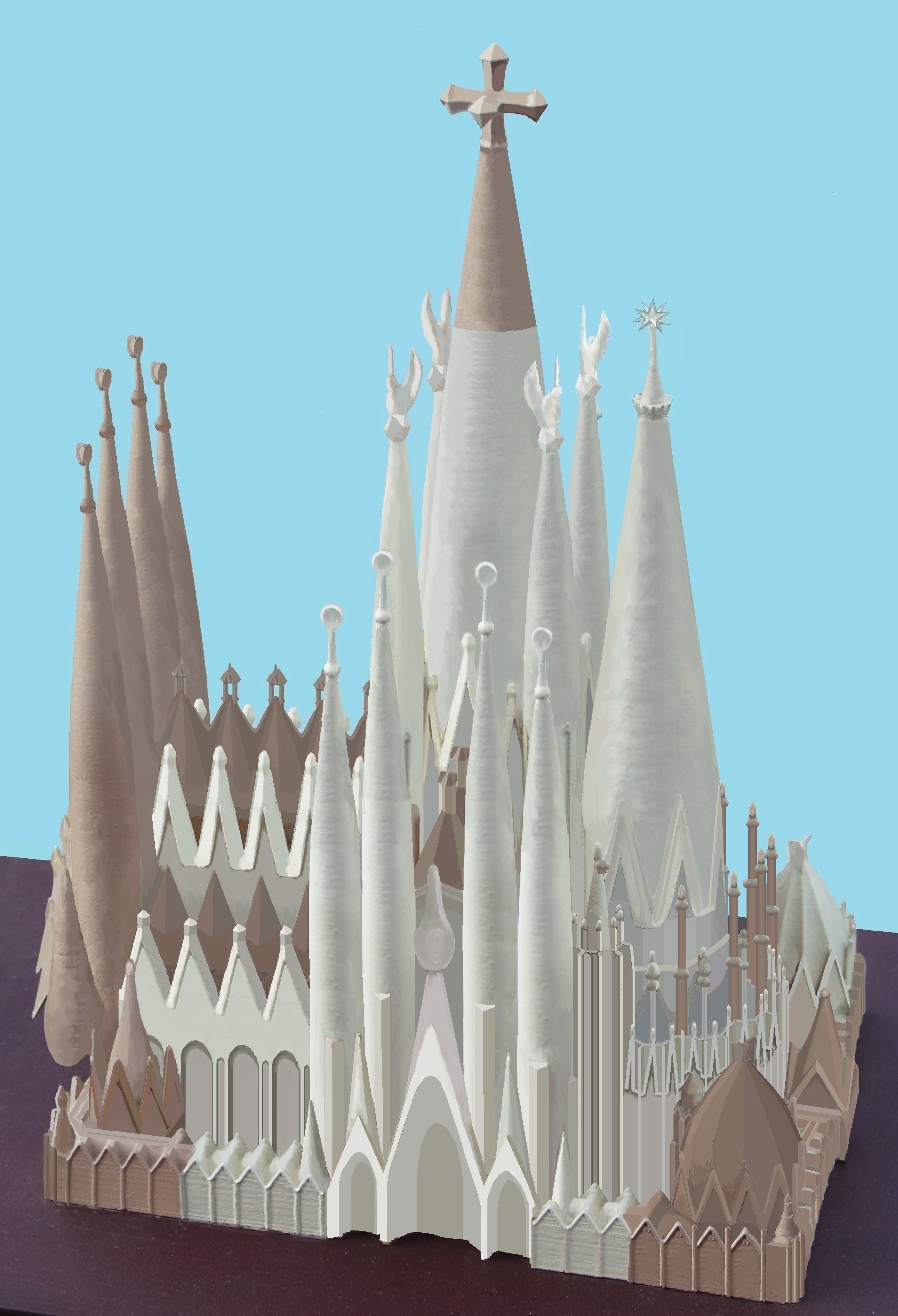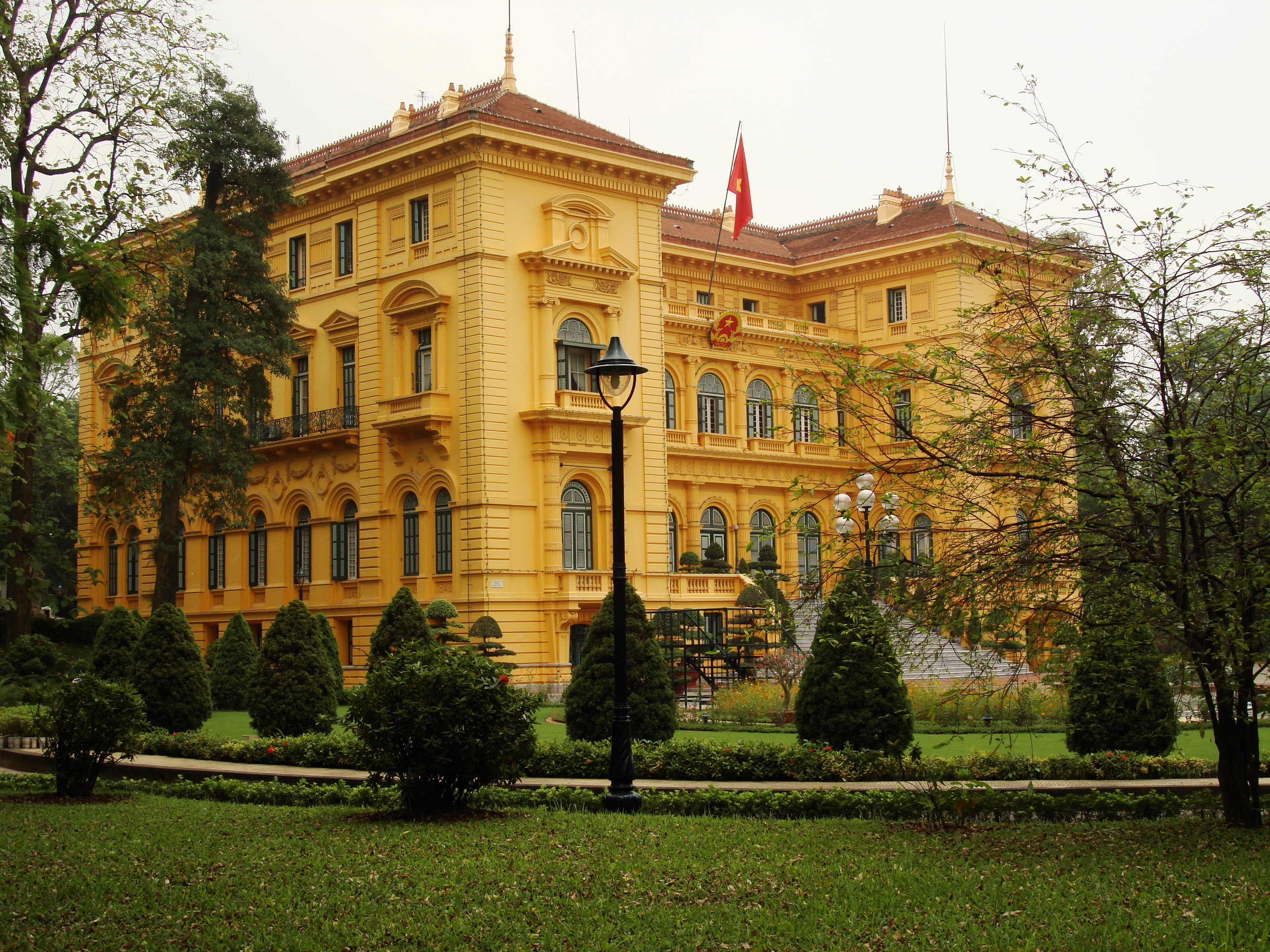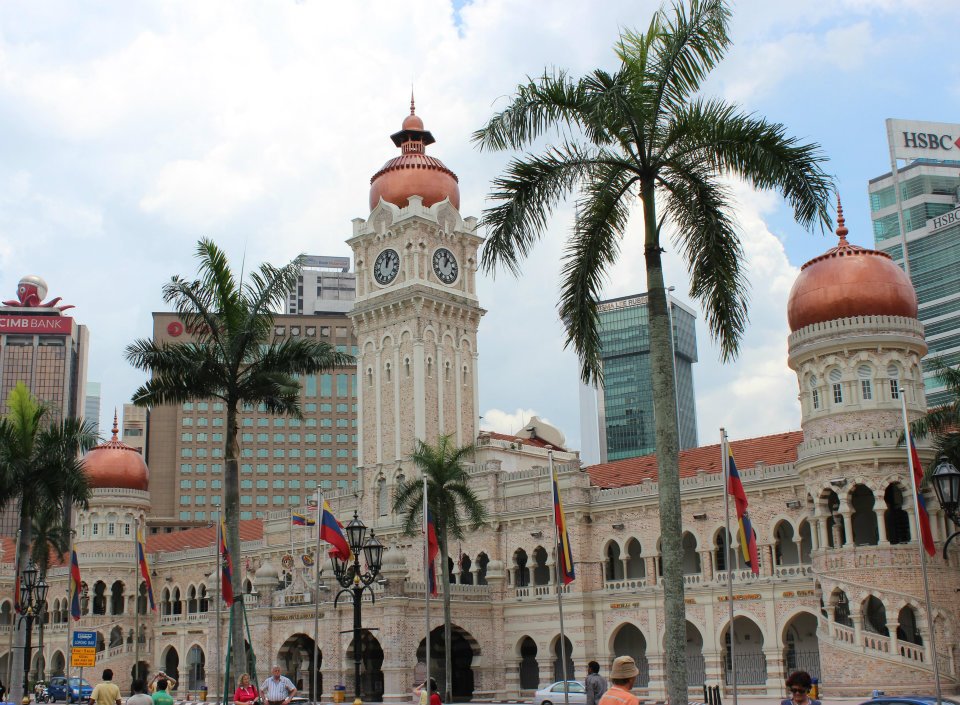|
Eclectic Architecture
Eclecticism is a 19th and 20th century architectural style in which a single piece of work incorporates a mixture of elements from previous historical styles to create something that is new and original. In architecture and interior design, these elements may include structural features, furniture, decorative motives, distinct historical ornament, traditional cultural motifs or styles from other countries, with the mixture usually chosen based on its suitability to the project and overall aesthetic value. The term is also used of the many architects of the 19th and early 20th centuries who designed buildings in a variety of styles according to the wishes of their clients, or their own. The styles were typically revivalist, and each building might be mostly or entirely consistent within the style selected, or itself an eclectic mixture. Gothic Revival architecture, especially in churches, was most likely to strive for a relatively "pure" revival style from a particular medieval ... [...More Info...] [...Related Items...] OR: [Wikipedia] [Google] [Baidu] |
Sagrada Família
The Basílica i Temple Expiatori de la Sagrada Família, shortened as the Sagrada Família, is an unfinished church in the Eixample district of Barcelona, Catalonia, Spain. It is the largest unfinished Catholic church in the world. Designed by the Catalan architect Antoni Gaudí (1852–1926), his work on Sagrada Família is part of a UNESCO World Heritage Site. On 7 November 2010, Pope Benedict XVI consecrated the church and proclaimed it a minor basilica. On 19 March 1882, construction of the Sagrada Família began under architect Francisco de Paula del Villar. In 1883, when Villar resigned, Gaudí took over as chief architect, transforming the project with his architectural and engineering style, combining Gothic and curvilinear Art Nouveau forms. Gaudí devoted the remainder of his life to the project, and he is buried in the church's crypt. At the time of his death in 1926, less than a quarter of the project was complete. Relying solely on private donations, the Sag ... [...More Info...] [...Related Items...] OR: [Wikipedia] [Google] [Baidu] |
Nostalgia
Nostalgia is a sentimentality for the past, typically for a period or place with happy personal associations. The word ''nostalgia'' is a learned formation of a Greek language, Greek compound, consisting of (''nóstos''), meaning "homecoming", a Homeric word, and (''álgos''), meaning "sorrow" or "despair", and was coined by a 17th-century medical student to describe the anxieties displayed by Swiss mercenaries fighting away from home. Described as a medical condition—a form of Depression (mood), melancholy—in the Early Modern period, it became an important Trope (literature), trope in Romanticism. Nostalgia is associated with a longing for the past, its personalities, possibilities, and events, especially the "Good old days, good ol' days" or a "warm childhood". There is a predisposition, caused by cognitive biases such as rosy retrospection, for people to view the past more favourably and future more negatively. When applied to one's beliefs about a society or institutio ... [...More Info...] [...Related Items...] OR: [Wikipedia] [Google] [Baidu] |
Banque De L'Indochine
The Banque de l'Indochine (), originally Banque de l'Indo-Chine ("Bank of Indochina"), was a bank created in 1875 in Paris to finance French colonial development in Asia. As a bank of issue in Indochina until 1952 (and in French Pacific territories until 1967), with many features of a central bank, it played a major role in the financial history of French Indochina, French India, New Caledonia, French Polynesia, and Djibouti, as well as French-backed ventures in Siam and China. After World War II, it lost its issuance privilege but reinvented itself as an investment bank in France, and developed new ventures in other countries such as Saudi Arabia and South Africa. The Compagnie Financière de Suez acquired a controlling interest in the Banque de l'Indochine in 1972, then merged it in 1975 with its own banking subsidiary to form Banque Indosuez, since 1996 itself part of the Crédit Agricole universal banking group. History Background and creation Following t ... [...More Info...] [...Related Items...] OR: [Wikipedia] [Google] [Baidu] |
French Colonial Architecture
French colonial architecture includes several styles of architecture used by the French during colonization. Many former French colonies, especially those in Southeast Asia, have previously been reluctant to promote their colonial architecture as an asset for tourism; however, in recent times, the new generation of local authorities has somewhat "embraced" the architecture and has begun to advertise it. French Colonial architecture has a long history, beginning in North America in 1604 and being most active in the Western Hemisphere (Caribbean, Guiana, Canada, Louisiana) until the 19th century, when the French turned their attention more to Africa, Asia, and the Pacific. In Canada French settlements in Canada date back to the mid-16th century until the French defeat in Seven Years' War where New France was annexed by the British Crown in 1763 as a result of the Treaty of Paris. The settlements in the regions were extensive, hence the abundant architectural legacy from that per ... [...More Info...] [...Related Items...] OR: [Wikipedia] [Google] [Baidu] |
Arthur Benison Hubback
Arthur Benison Hubback (13 April 1871 – 8 May 1948) was an English architect and soldier who designed several important buildings in British Malaya, in both Indo-Saracenic architecture and European " Wrenaissance" styles. Major works credited to him include Kuala Lumpur railway station, Ubudiah Mosque, Jamek Mosque, National Textile Museum, Panggung Bandaraya DBKL, Ipoh railway station, and Kowloon railway station. After an English training in Liverpool, he arrived in Malaya in 1895, and by 1900 was appointed chief government architect of the British-run Federated Malay States, returning to Britain in 1914 at the start of World War I, though he did not officially resign until 1917. Reversing the pattern of many British architects of the British Raj in India, he was an architect who became a soldier, commanding troops in France, and remaining in the army until his retirement in 1924. He was active in sports, especially football and cricket. Hubback was promoted to brig ... [...More Info...] [...Related Items...] OR: [Wikipedia] [Google] [Baidu] |
Malaysia
Malaysia ( ; ) is a country in Southeast Asia. The federation, federal constitutional monarchy consists of States and federal territories of Malaysia, thirteen states and three federal territories, separated by the South China Sea into two regions: Peninsular Malaysia and Borneo's East Malaysia. Peninsular Malaysia shares a land and maritime Malaysia–Thailand border, border with Thailand and Maritime boundary, maritime borders with Singapore, Vietnam, and Indonesia. East Malaysia shares land and maritime borders with Brunei and Indonesia, and a maritime border with the Philippines and Vietnam. Kuala Lumpur is the national capital, the country's largest city, and the seat of the Parliament of Malaysia, legislative branch of the Government of Malaysia, federal government. The nearby Planned community#Planned capitals, planned capital of Putrajaya is the administrative capital, which represents the seat of both the Government of Malaysia#Executive, executive branch (the Cabine ... [...More Info...] [...Related Items...] OR: [Wikipedia] [Google] [Baidu] |
Kuala Lumpur Railway Station
( Jawi) zh, 吉隆坡 ta, கோலாலம்பூர் , address = Jalan Sultan Hishamuddin, 50621 Kuala Lumpur , borough = , country = Malaysia , coordinates = , grid_name = , grid_position = , elevation = , owned = Keretapi Tanah Melayu , operator = , manager = , transit_authority = , line = West Coast Line , distance = , platforms = 2 side platform and 1 island platform , tracks = 4 , train_operators = , connections = Connecting station to Pasar Seni via a 400-metre pedestrian walkway , structure = , depth = , levels = , parking = , bicycle = , disabled = , architect = Arthur Benison Hubback , architectural_style = Indo-Saracenic , status = , code ... [...More Info...] [...Related Items...] OR: [Wikipedia] [Google] [Baidu] |
Indo-Saracenic Revival Architecture
Indo-Saracenic architecture (also known as Indo-Gothic, Mughal-Gothic, Neo-Mughal, or Hindoo style) was a revivalist architectural style mostly used by British architects in India in the later 19th century, especially in public and government buildings in the British Raj, and the palaces of rulers of the princely states. It drew stylistic and decorative elements from native Indo-Islamic architecture, especially Mughal architecture, which the British regarded as the classic Indian style, and, less often, from Hindu temple architecture. The basic layout and structure of the buildings tended to be close to that used in contemporary buildings in other revivalist styles, such as Gothic revival and Neo-Classical, with specific Indian features and decoration added. The style drew from western exposure to depictions of Indian buildings from about 1795, such as those by William Hodges and the Daniell duo (William Daniell and his uncle Thomas Daniell). The first Indo-Saracenic bui ... [...More Info...] [...Related Items...] OR: [Wikipedia] [Google] [Baidu] |
São Paulo
São Paulo (, ; Portuguese for 'Saint Paul') is the most populous city in Brazil, and is the capital of the state of São Paulo, the most populous and wealthiest Brazilian state, located in the country's Southeast Region. Listed by the GaWC as an alpha global city, São Paulo is the most populous city proper in the Americas, the Western Hemisphere and the Southern Hemisphere, as well as the world's 4th largest city proper by population. Additionally, São Paulo is the largest Portuguese-speaking city in the world. It exerts strong international influences in commerce, finance, arts and entertainment. The city's name honors the Apostle, Saint Paul of Tarsus. The city's metropolitan area, the Greater São Paulo, ranks as the most populous in Brazil and the 12th most populous on Earth. The process of conurbation between the metropolitan areas around the Greater São Paulo (Campinas, Santos, Jundiaí, Sorocaba and São José dos Campos) created the São Paulo Macrometr ... [...More Info...] [...Related Items...] OR: [Wikipedia] [Google] [Baidu] |
Palácio Das Indústrias
The Palácio das Indústrias is a historical building in São Paulo, under the protection of the Council for the Defense of Historical, Archaeological, Artistic and Tourist Heritage (CONDEPHAAT). It was designed by in conjunction with Ramos de Azevedo and and is located in the . It is a representative of the Eclectic style and was designed for hosting industrial exhibitions. The first exhibition was held there in 1917. It was converted into a legislative assembly in 1947 and its name was changed to the "Palácio Nove de Julho" (Ninth of July, commemorating the Constitutionalist Revolution). In the 1970s, it also served as the home of the Public Security Secretariat and contained some jail cells. In 1992, after restorations by the architect Lina Bo Bardi Lina Bo Bardi, born Achillina Bo (5 December 1914 – 20 March 1992), was an Italian-born Brazilian modernist architect. A prolific architect and designer, she devoted her working life, most of it spent in Brazil, to promot ... [...More Info...] [...Related Items...] OR: [Wikipedia] [Google] [Baidu] |
New World Queen Anne Revival Architecture
In the New World, Queen Anne Revival was a historicist architectural style of the late 19th and early 20th centuries. It was popular in the United States, Canada, Australia, and other countries. In Australia, it is also called Federation architecture. United States In the United States, Queen Anne Revival architecture was popular from roughly 1880 to 1910. "Queen Anne" was one of a number of popular architectural styles to emerge during the Victorian era. Within the Victorian era timeline, Queen Anne style followed the Stick style and preceded the Richardsonian Romanesque and Shingle styles. The style bears almost no relationship to the English Baroque architecture produced in the actual reign of Queen Anne from 1702 to 1714. It is loosely used of a wide range of picturesque buildings with "free Renaissance" (non-Gothic Revival) details rather than of a specific formulaic style in its own right. "Queen Anne", as an alternative both to the French-derived Second Empire and t ... [...More Info...] [...Related Items...] OR: [Wikipedia] [Google] [Baidu] |







